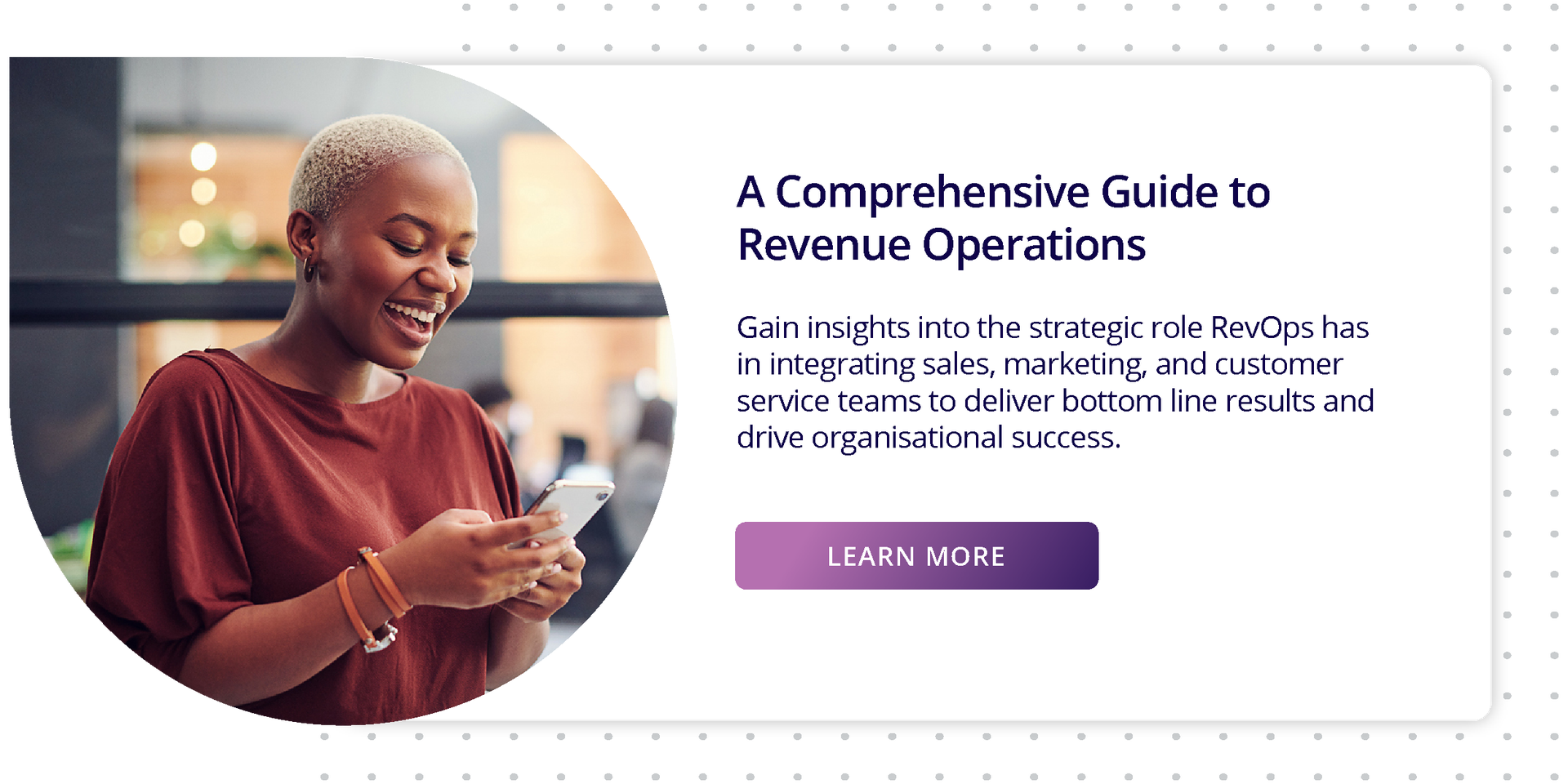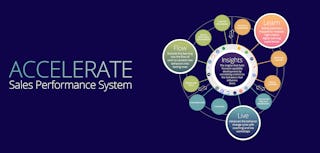Revenue Operations vs. Sales Operations
Sales management

What’s the Difference Between Revenue Operations & Sales Operations?
It’s essential that companies optimise their business operations so they can enhance efficiency, improve customer satisfaction, increase revenue, and maintain a competitive edge. Sales operations (SalesOps) and revenue operations (RevOps) play key roles in this process.
In this article, we’ll explain the key functions of each, highlight their differences, and provide you with tips for implementation success.
Sales Operations: Optimising Sales Processes
SalesOps enables teams to achieve their targets and drive revenue by optimising sales processes, managing sales data, and providing necessary tools and insights.
Sales operations is a process of continuous refinement that provides sales representatives with a clear and efficient path to follow. By identifying and eliminating bottlenecks within the sales workflow, sales reps can drastically reduce the time spent on administrative tasks and focus on building relationships with potential customers and closing deals. Territory management, for example, maximises market coverage and revenue potential by assigning sales territories based on various factors such as travel time, potential revenue, and current sales rep workload.
In order to predict future performance, set achievable goals, and capitalise on market opportunities, SalesOps relies heavily on data analysis and insights. SalesOps teams use historical sales data, market trends, and economic indicators to identify potential selling opportunities within existing customer accounts and develop accurate sales forecasts.
A good customer relationship management (CRM) system is the most important tool in a SalesOps team’s arsenal. With it, they can monitor all sales pipelines from start-to-finish, track performance metrics, and circulate critical information to the rest of the sales team. CRMs are most valuable to SalesOps when they are up-to-date, user-friendly, and provide actionable insights that drive sales.
When the SalesOps team has accurate and timely information, they can better track customer interactions, automate sales processes, and provide sellers with insights into customer behaviours and preferences. This leads to more personalised and effective interactions, resulting in higher customer satisfaction and loyalty – all of which are crucial for long-term business success.
Revenue Operations: Optimising Sales, Marketing, & Customer Success Processes
While SalesOps is primarily focused on optimising the sales team’s efficiency and effectiveness, RevOps focuses on driving revenue growth across the entire customer journey.
RevOps fosters collaboration between sales, marketing, and customer success departments to ensure these teams are sharing data, integrating their workflows, and ultimately working together toward business growth and revenue goals.
Successful revenue operations directly impact sales operations initiatives. The collaborative and data-driven nature of RevOps provides valuable insights that enhance SalesOps, allowing companies to make informed decisions, identify opportunities for growth, and optimise resource allocation.
SalesOps vs. RevOps: Key Differences
SalesOps and RevOps share a common goal of driving revenue growth, but they differ in their application.
SalesOps optimises sales processes and ensures that reps can operate at peak efficiency by streamlining sales workflows and measuring metrics such as close rates, average deal size, sales pipeline velocity, and quota attainment. Key SalesOps activities include refining tactics, managing territories, and improving lead qualification processes.
RevOps adopts a more integrated approach to optimise processes across departments, supporting a unified strategy where technology systems are compatible and share data seamlessly. Key performance indicators (KPIs) encompass the entire revenue cycle, including annual recurring revenue (ARR), customer lifetime value (CLV), revenue retention rate, and customer churn rate.
Here’s an example to illustrate the SalesOps vs. RevOps approach:
An e-commerce company is facing high customer churn rates and wants to improve retention.
The SalesOps team focuses on training sales reps for better customer relationship management. After implementing a new CRM feature to track customer interactions, they develop targeted sales campaigns aimed at existing customers and strategies for engaging at-risk customers. As a result, the sales team becomes more adept at maintaining customer relationships, however, the approach remains siloed and primarily benefits the sales department.
Alternatively, the RevOps team integrates customer feedback into a centralised system to gain insights into the entire experience. From there, marketing implements a personalised retention campaign, sales focuses on proactive engagement with at-risk customers, and customer success develops a robust support programme. This comprehensive strategy ensures that customers feel valued and supported throughout their journey, leading to long-term loyalty and increased lifetime value.
Implementing SalesOps and RevOps
When implementing a sales operations and revenue operations strategy, consider your business’s specific needs and current growth stage, and keep these key differences in mind.
A SalesOps strategy is great for:
- Streamlining sales activities, managing CRM systems, and optimising the sales funnel. This ensures that your sales team operates efficiently and effectively.
- Supporting hungry sales teams that would benefit from process optimisation, targeted training programmes, and effective territory management. SalesOps provides your sales reps with the tools and data they need to close deals faster.
- Ensuring a sales-specific focus within the organisation.
A RevOps strategy supports:
- Established sales, marketing, and customer success teams. RevOps aligns these departments for a unified approach to revenue generation.
- Cross-departmental collaboration that aligns goals across teams, leading to a more cohesive and effective revenue strategy.
- Data integration and unified reporting across different functions. This provides a holistic view of business performance to enable more informed decision-making.
- Alignment of efforts across all customer touchpoints for a more holistic customer experience, from lead generation to retention and upselling.
Focus your implementation efforts on the right activities. For SalesOps, that means optimising processes, providing skill development for the sales team, implementing and managing tools and technology, and tracking sales-specific metrics. RevOps, on the other hand, requires strong cross-functional alignment, data integration, process automation, and comprehensive metrics that gauge overall revenue performance.

Brief: Using Performance Metrics to Build the Selling Skills That Matter
Our article teaches about the challenge of connecting selling behaviours to business metrics, its critical effect on revenue, and how to create the connection in your organisation.
DownloadGet industry insights and stay up to date, subscribe to our newsletter.
Joining our community gives you access to weekly thought leadership to help guide your planning for a training initiative, inform your sales strategy, and most importantly, improve your team's performance.











